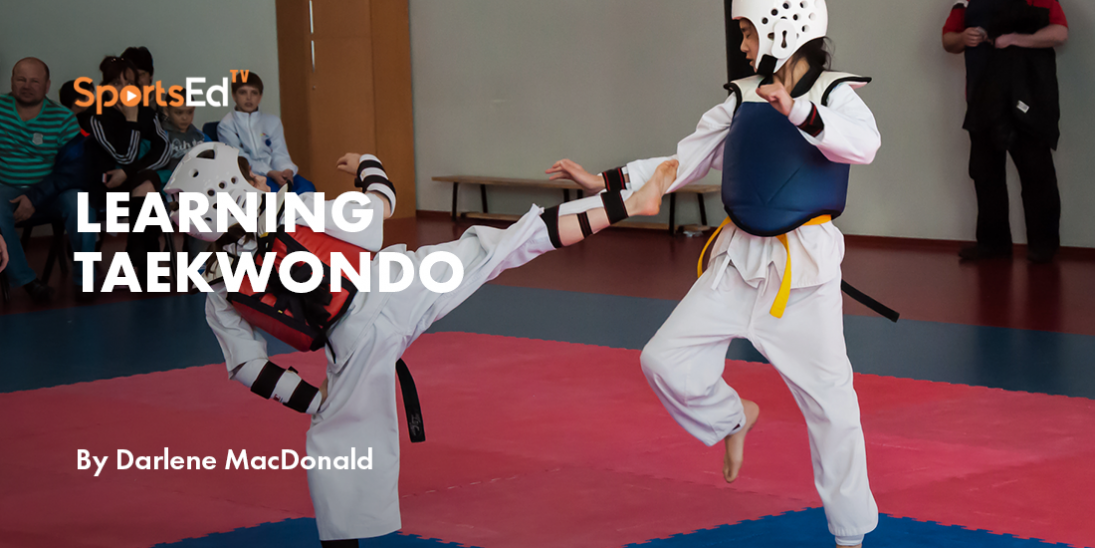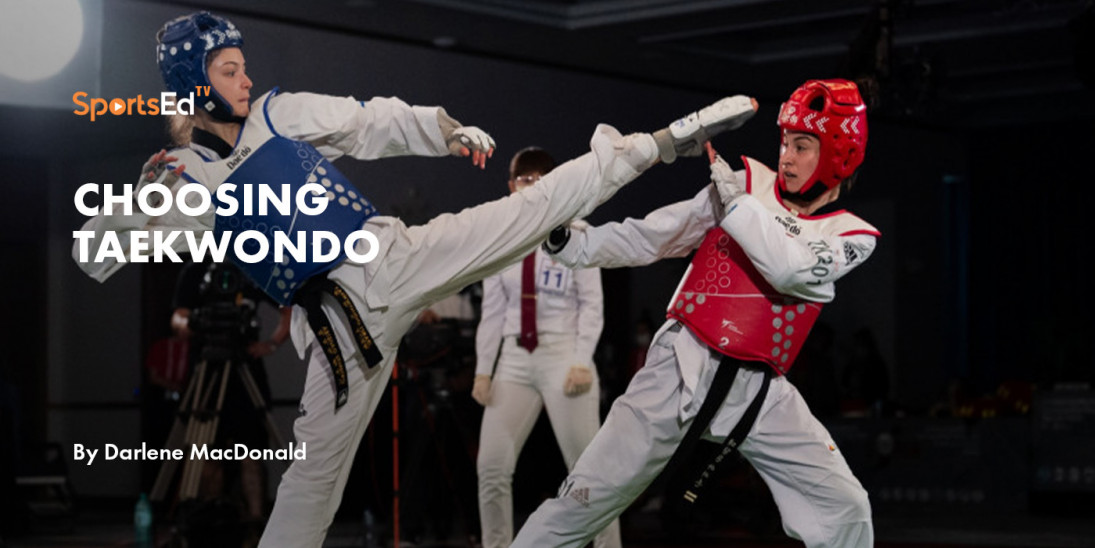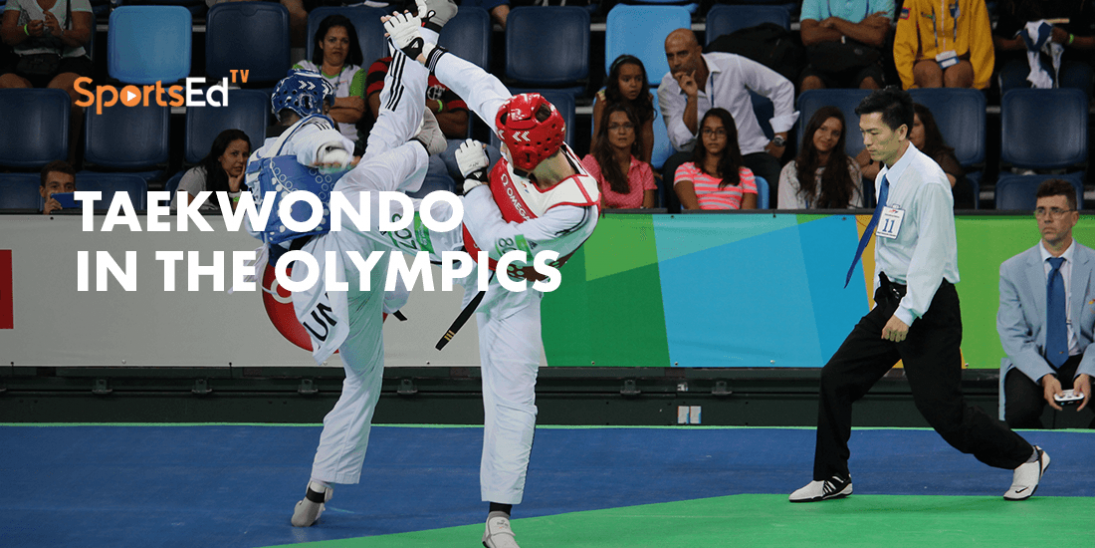Taekwondo
Welcome and thanks for visiting...

Taekwondo Training During a Pandemic
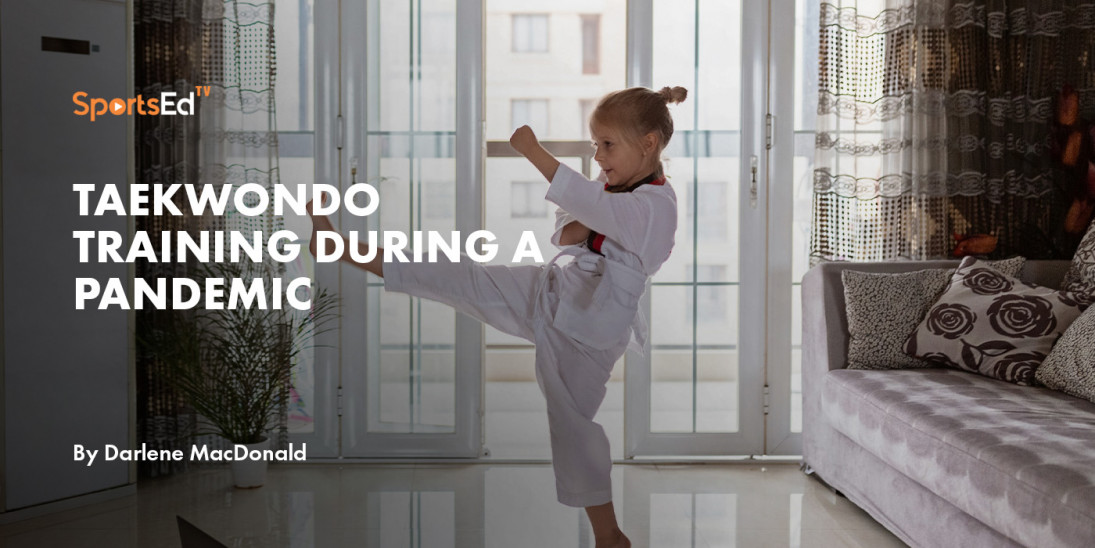
SportsEdTV Taekwondo is committed to bringing athletes, coaches, and parents pro-level taekwondo education videos for FREE. All levels, anywhere, anytime. Check out our full instructional library and sign up to join our taekwondo community!
As we started 2020 most of us had no idea about the pandemic that was emerging. We went about our daily training routines and showed up at the dojang for training. As the coronavirus spread around the world and Covid-19 became a pandemic our daily lives were interrupted and transformed. Dojangs all around the world were required to close their doors, temporarily at the very least. Competitions were canceled or postponed. From local competitions to professional leagues to World Championships to Olympic Games, sport events stopped. As the saying goes, “with every adversity there is a chance for opportunity”. I wanted to find out how the pandemic affected people at a basic level, their daily training. Was there only challenge and adversity or was there the opportunity for something more?
I circulated an online English language survey via social media for two weeks and received responses during 2020 09 26 to 2020 10 06. Taekwondo participants often take on various roles and respondents were instructed to answer survey questions from one perspective only. Although the main group of respondents were club owners (see Figure 1) from Canada (see Table 1), respondents were represented from 14 different countries and all regions of World Taekwondo and the Olympic Associations.
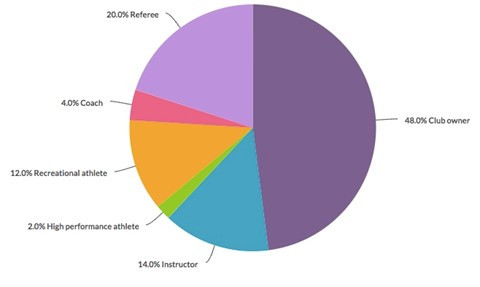
Figure 1: Role in Taekwondo
Table 1: Country of residence |
|||
|
Argentina |
1 |
Italy |
1 |
|
Australia |
1 |
Malaysia |
1 |
|
Belgium |
1 |
Mexico |
1 |
|
Brazil |
1 |
Switzerland |
1 |
|
Canada |
31 |
Thailand |
1 |
|
Egypt |
1 |
United States |
6 |
|
France |
1 |
undeclared |
1 |
|
Germany |
1 |
|
|
Approximately, two thirds of respondents (see Table 2), reported that they trained regularly prior to the pandemic, with another 22% who were active occasionally.
Table 2: Training prior to pandemic |
|
|
I trained regularly |
66.0% |
|
I trained irregularly |
22.0% |
|
I haven’t trained for a while |
12.0% |
The situation that arose from the pandemic caused an astounding 96% of dojangs, where respondents practiced or taught at, to close (see Figure 2). This left practitioners with a gap in taekwondo instruction but like many industries, there was a significant amount of adaptation. Club owners and instructors started teaching remotely with 70% offering classes online, including the respondents who indicated that their dojang did not close during the pandemic (see Figure 3).
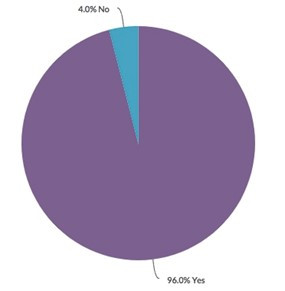
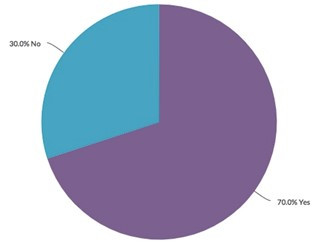
Figure 2: Dojang closed During Pandemic |
Figure 3: Online Classes During Pandemic |
There were different approaches to how respondents managed training during the pandemic (see Figure 4), including training alone (40%), training along with online classes (34%), taking a break from training (10%), or training with someone else (6%). Just over half (52%) were satisfied with their training during the pandemic (see Figure 5).
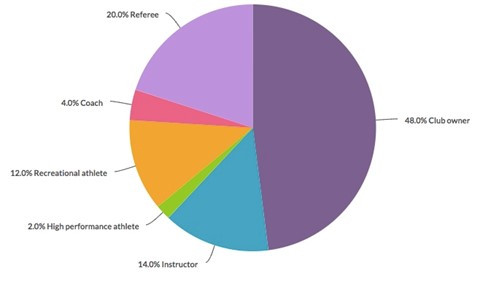
Figure 4: Training during the pandemic
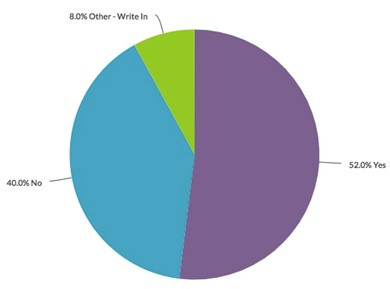
Figure 5: Satisfaction with training during the pandemic |
Survey respondents reported that their dojangs had largely reopened (82%) during the survey period, while there were still some (16%) that had not reopened (see Figure 6). Considering there was an ongoing and active pandemic, it is reasonable to surmise that not everything was likely to be the same as before the pandemic. Would the respondents be able to find further satisfaction or lessons learned as we moved toward a second wave? What evolution had their classes and dojangs experienced?
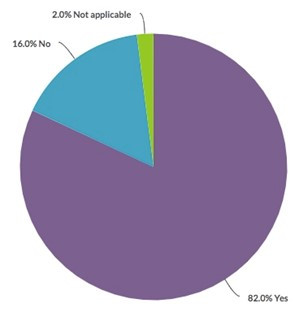
Figure 6: Dojang reopened |
After the first wave of Covid-19 some dojangs reopened and, other than online classes, experienced changes to in-person classes offered at the dojang. These changes affected training, class size, added safety protocols, and class structure.
As classes once again started to open they were offered in multiple ways, either online, in person but outside, or in person and inside the dojang. Generally, training was different than prior to the pandemic. The new environment practiced by athletes meant smaller classes, using face shields and/or masks, and an absence of any physical contact, including sparring or self-defence drills. There was some contact mentioned with kicking pads. One respondent mentioned that their creative outdoor training used “tree-held targets” (Club Owner 1) for kicking practice. It was clear that in-person classes had changed though. One respondent explained, “Trainings had to be adapted, we are using social distances and masks … all moves, exercises and so on had to be adapted!” (Club owner 2). The adaptations had mixed results for example, for some it was “less fun” (Club owner 3) while for others it was found that, “energy is higher more then [sic] ever” (Recreational athlete 1).
Undoubtedly, training was affected also because of the class size. Many respondents reported that class sizes decreased. Because of the distancing protocols there was a greater need for space and so a lesser amount of people were able to fill up the dojang training areas than prior to the pandemic. For some club owners this meant adding additional classes. In addition, class sizes were also reduced because some athletes who stopped going to class initially because of the risk of the virus and because of the lockdown did not return after re-opening the dojang
Those athletes who did return experienced added safety measures due to the pandemic, such as “space distancing, gym cleansing, washing hands, and have went further to wear mask or face shield for practice with daily temp check prior to admissions for class. Limiting number of people inside the gym by having drop off / pick up only” (Club owner 4). For club owners, even though class sizes were reduced there was much more time spent due to the need for more rigorous daily cleaning protocols.
Furthermore, the class structures were somewhat altered. There was a varied approach to using equipment from no equipment to limited use of equipment. Additionally, prior to the pandemic, some classes had an overlap of time between classes but with pandemic protocols implemented there was no longer any overlap and instead one respondent reported that there was an increase in the time between classes to ensure there were less people in the dojang. Furthermore, there were some limitations implemented for spectators by limiting the number of people allowed in the dojang and allowing drop off and pick up of athletes only. “We do not have anymore the 10 minutes overlapping between 2 different classes, we use more phisical [sic] distances between us, and we are less (some people didn't [sic] came back yet).” (Referee 1)
Although there were many changes to taekwondo classes during the pandemic there were also some benefits experienced by respondents. This was a time that enabled athletes and coaches to focus on fundamentals as well as individual needs and goals. As Coach 1 mentioned, there was “the ability to focus on each individuals weaknesses.” As participants in a class setting, not everyone progresses at the same rate nor do they acquire the same skills in basic fundamentals. Whether athletes trained with online classes, with a partner, or by themselves there was increased opportunity for them to focus more on fundamentals that could be better addressed or developed, leading the way for higher level skills to develop. For example, increasing flexibility for high kicks, or correcting your body position while delivering single kicks. Individual needs and goals may include avoiding activities that enable an athlete to allow her or his injury to heal, or increasing reaction timing. The benefits for one athlete was to “Increase leg mobility, review fundamentals, heal injuries” (High Performance Athlete 1)
Perhaps the greatest benefit to training that resulted from the pandemic was the online training. For some, it may not have been the best way to train but considering that many places were locked down, it certainly was a beneficial alternative. For those whose motivation to train is increased when others are also training this was an incentive to report in, be accountable, follow along with a class, and feel some camaraderie with other practitioners, even if it was virtual. For some it allowed them to experience the physical and mental benefits of regular exercise. Finally, for club owners, instructors, and coaches, online training allowed them to maintain or build their relationships through the virtual connection with their athletes. One respondent also mentioned that online training helped her or him to remain connected to her or his classmates since the pandemic saw her or him locked down in a different city in a different country, “This was actually beneficial for me because my club is in [Canada] and I am here in The US. And I was able to participate in class” (Referee 2).
Of course, like most things brought on by the pandemic, there were a lot of challenges for training in taekwondo during this time. All, or most, categories of respondents experienced challenges in four different areas: issues due to absence of partner or team, the training space, motivation, and contact.
Since the pandemic caused lockdowns and, therefore, dojangs were closed, and athletes were required to train in an alternative environment, taekwondo teams and training partners were often not available. Furthermore, when dojangs were opened, socially distanced protocols were put into place where class numbers were reduced and contact was forbidden. These challenges were difficult for all types of respondents. One athlete felt that “not having a partner to step with and hold pads was limiting” (Recreational athlete 2). For many, it was a challenge to find the space. Referee 3 mentioned that a challenge faced was, “to find a place for practicing.” All other groups of respondents also had to deal with this challenge, whether it was not enough space or perhaps the flooring was inadequate. Another challenge that many faced was motivation. For individuals training alone, or even training along with a virtual group, they found their motivation decreasing. This was true so much so that some respondents paused their training regime during the pandemic. For club owners motivating their clientele seemed to be a difficult task for many. One club owner wrote, “there is limit to how much engagement we can make with students online. Especially younger students start to show boredom or frustration” (Club owner 4). This challenge may have been further exacerbated by the inability to engage in contact with others, “I missed having sparring partners and pad holders” (Club owner 5), or even the inability to kick targets, “Not being able to kick anything” (Recreational athlete 1).
When facing adversity, many can suffer, but some may also learn and have the ability to move forward stronger due to the lessons learned. For many, the challenges and adversity brought on by the pandemic may have been the most serious they have faced as an athlete or as a club owner, for example. What can we learn from the experiences during the pandemic so far? One common theme was offered by this club owner was, “My big suggestions is to find someone to do it with you! A friend, brother, boyfriend, girlfriend doesn't matter. It can be done in person or online, but someone to hemp [sic] you, to motivate, help you have the focus and keep the consistency of the training” (Club owner 2). There were other suggestions, such as from Club owner 4 who wants, “someone to look over the class together with the main instructor to make sure all students feel they are engaged in the class.” Another club owner realized that because of the pandemic, “It's important to be creative. If you teach Taekwondo the way you were taught, it probably will not work. I think of my online classes like an interactive show. I have to keep them excited, motivated and entertained to have them want to come back tomorrow” (Club owner 6). Perhaps the most common approach during the pandemic across taekwondo classes and also across so many other businesses was the idea to incorporate technology and set up virtual classes in order to reach clientele, to keep athletes engaged, participating, connected, and interested. Instructor 1 explained,
“I set up a zoom class and it worked out very well. I will likely offer this going forward as a convenient way to squeeze in extra time with students who might need extra work. I have a pretty big room in the basement and put down a foam floor, purchased a BOB so that I could show proper techniques and targeting, had a big TV on the wall so that I could see all of the students and comment on what they were doing. I would always start the zoom 15 min ahead of time and allow for questions. We used Facebook to let people know the details and had one of the students act like tech support to ensure everyone was able to join. From my perspective it was a terrific experience. Feedback from students was also very positive.”
It's been almost a year since the World Health Organization declared COVID-19 a public health emergency on January 30, 2020 (https://www.who.int/emergencies/diseases/novel-coronavirus-2019/interactive-timeline/). Sport in general, and taekwondo specifically, has faced many changes. Those involved have experienced difficulty, seen benefits, learned from the hardships and transformations and now look to the future. There are many unanswered questions. When will the pandemic end? Will training get back to pre-pandemic days, or similar to pre-pandemic days? What changes will there be because of what we have experienced in 2020 and into 2021? Survey respondents certainly had some additional thoughts about these questions and about the future. The pandemic certainly posed a challenge worldwide but taekwondo training will keep going. It needs to continue. Taekwondo is a great activity that is well suited to so many and engaging in physical activity or exercise is important to our overall physical and mental health. Taekwondo training will keep going and meet the challenge but it may be necessary to adapt classes to a new reality, for example by offering online training. For those knowledgeable, committed, and creative instructors perhaps this will mean an expanded target market or, at least, a different perspective to the business plan. For athletes, this could expand choices as to who you train with, who you supplement your training with, and who you learn from. Although technology may offer some solutions, and many respondents used technology to participate in virtual classes, for some it is certainly not a solution. Club owner 2 highlighted:
“The online training was a big challenge for some people, some were able to do it others not. It happens cause few cities or counties [don't] have the same internet structure, some students [don't] have internet connection or even a computer/cellphone at home to have access to it so sometimes even wanting to give online classes it made us think that we would be excluding a good amount of people from training.”
This could be a problem going forward. For many participants a favoured part of taekwondo is putting their skills to the test in competition but with the disruption in the competition schedule, from local championships to the largest multi-sport event in the world, the Olympic Games, competitions were cancelled or postponed. Some respondents miss competition while others were concerned that COVID-19 could mean the death of competition. Solutions did emerge. World Taekwondo adapted and held the first Online World Taekwondo Poomsae Championships successfully. Since the beginning of taekwondo there have been adaptations and evolutions. It appears that the pandemic has spurred taekwondo training to once again adapt and evolve.

